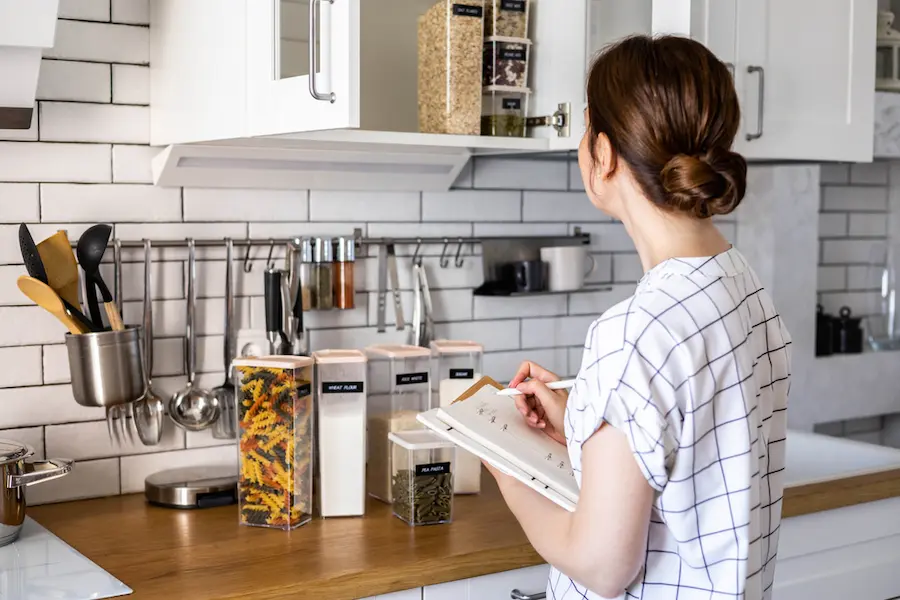Table of Contents
Key Takeaways:
- Effective layouts are essential for small kitchen functionality and flow.
- Choosing suitable appliances and intelligent technology enhances kitchen efficiency.
- Innovative storage solutions are crucial for both design and practicality in small kitchens.
- Color and lighting strategies can visually expand a small kitchen space.
- A balance of professional and DIY efforts can make or break a minor kitchen remodel.
- Real-life kitchen makeovers showcase the potential of expert design in small spaces.
Understanding Small Kitchen Design Principles
Navigating the challenges of small kitchen design requires a thoughtful approach that balances aesthetic preferences with practical necessities. The essential lies in maximizing each square foot, implementing clever design tricks to make the space feel more extensive, and selecting functional yet stylish appliances and decor. Even in metropolitan areas, where space comes at a premium, such as the bustling cityscape of London, efficient use of a small kitchen is achievable. This balance of efficiency and style is best exemplified by the finesse of kitchen fitters in London, who can transform compact areas into modern and fully functional culinary spaces.
Ideas for Space-Saving Kitchen Layouts
Utilizing the golden triangle principle—where the stove, sink, and refrigerator are placed in a triangular formation to optimize the flow of kitchen activities—is invaluable in small kitchens. Vertical solutions like pot racks, magnetic knife strips, and stackable shelving can be adopted to maximize space further. Innovative approaches to storage can make a world of difference; sliding cabinets, for example, provide easy access while conserving space. Open shelving, a current trend in kitchen design, also adds to the illusion of spaciousness, offering an intelligent alternative to traditional closed cabinetry by reducing visual bulk and promoting an airy atmosphere.
Choosing Flooring and Wall Treatments to Enlarge Spaces Visually
When it comes to the design of a small kitchen, the selection of appropriate flooring and wall treatments can be just as influential as the choice of layout and storage. Diagonal floor tile patterns can trick the eye and make the kitchen appear more spacious than it is. Wall treatments, too, play a critical role; paint can open up a space, while wallpaper can add depth and interest without taking up any physical space. However, choosing patterns and colors with an expanding effect is crucial, such as light hues or subtle stripes, which elongate walls and create visual flow.
Selecting the Right Appliances for Small Kitchens
The key to appliance selection in small kitchens is dual functionality and compactness. Modern advancements have brought forth appliances that can multitask, consolidating functions without occupying additional space. Smart kitchen devices are especially suitable for small kitchens. They enhance efficiency by neatly integrating into the space, keeping countertops clear, and contributing to a clutter-free environment. In smaller kitchens, every inch matters, and the careful choice of appliances can significantly impact both space and usability.
Unlocking the Potential of Creative Storage Solutions
Storage can often be a significant issue in reduced kitchen spaces, but this challenge can be handled creatively. Employing ingenious storage solutions that cater to the needs of small kitchens is a creative and practical method to keep kitchens organized and stylish. Options like magnetic spice racks, cabinet door organizers, and toe-kick drawers exploit underused spaces. Moreover, compartmentalized drawers and stackable bins enhance organization, creating an orderly and efficient cooking environment.
Employing Color and Lighting to Make Kitchens Look Larger
Using color schemes and lighting can dramatically alter the perception of space within a small kitchen. Light and neutral colors can reflect light, making the walls appear to recede. When paired with well-placed task lighting and ambient lighting, this can brighten up a small kitchen and give the illusion of a more expansive space. Reflective materials that bounce light around the space and give it an air of openness, like glass tiles or high-gloss finishes, can improve this effect.
Optimizing the Utility of Islands and Dining Areas
Although kitchen islands are desirable in kitchen designs, they require intelligent scaling in smaller spaces. A slender, movable kitchen cart or a petite island with integrated storage can provide extra prep space and utility without crowding the room. Similarly, selecting furniture for dining areas that can serve multiple purposes, like a bench with hidden storage or a fold-down table, allows for functional dining without permanently reducing living space. These choices can add significant value and versatility to the kitchen’s layout, allowing for social interaction and dining within a constrained area.
Accessorizing to Elevate Style Without Clutter
Decorating a small kitchen is an exercise in restraint and strategic choice. It’s essential to select accessories that serve a purpose or enhance organization. Items like wall-mounted racks for utensils not only add personality but also keep tools within reach. A streamlined approach to decorations eliminates clutter and maintains a clean, minimalist aesthetic that is both practical and chic. Each chosen element should contribute to the kitchen’s functionality or carry significant design weight to justify its presence in a limited space.
Navigating Between Professional Help and DIY in Kitchen Remodels
The journey to a dream kitchen often involves professional intervention and personal DIY efforts. Knowing when to hire professionals for tasks like electrical work or custom cabinetry can save time, stress, and even money by ensuring the job is done right the first time. For remodeling aspects requiring specialized skills or tools, seeking professional kitchen fitters’ expertise can ensure the final product’s longevity and quality. Conversely, more straightforward tasks such as painting or hardware replacement can be more budget-friendly when tackled as DIY projects, allowing personalization and experimentation within the remodeling process.

